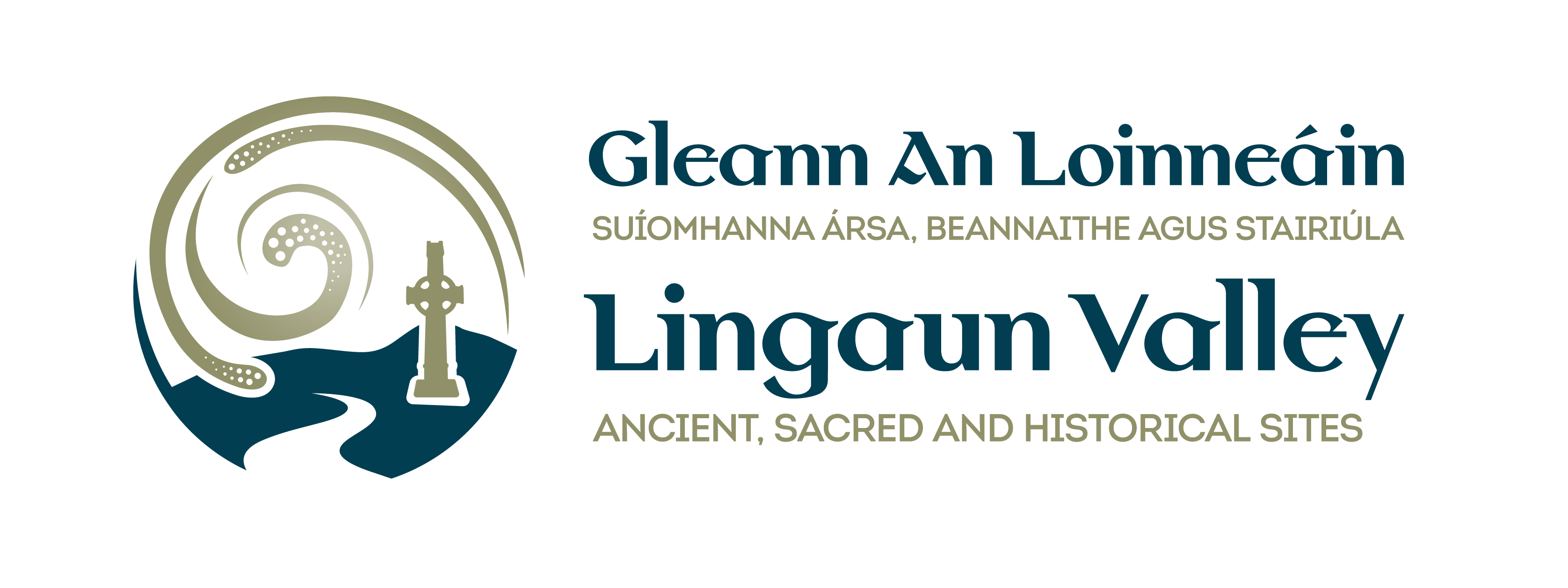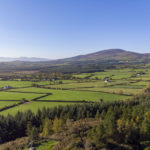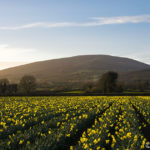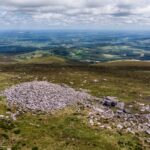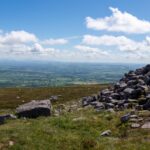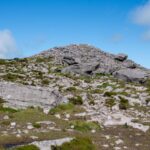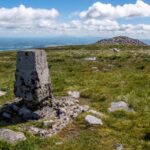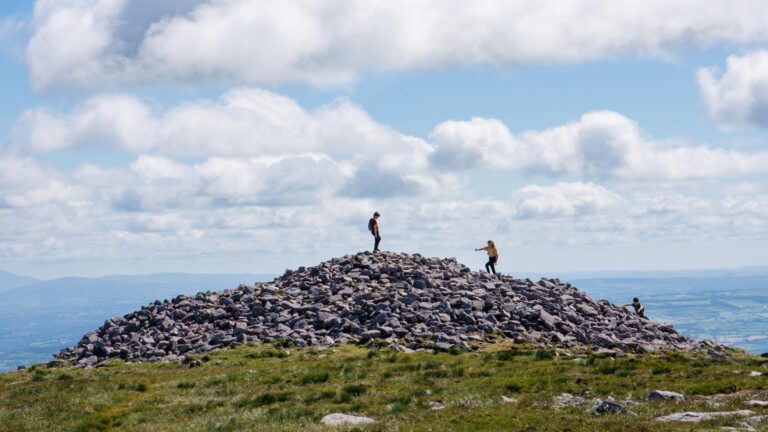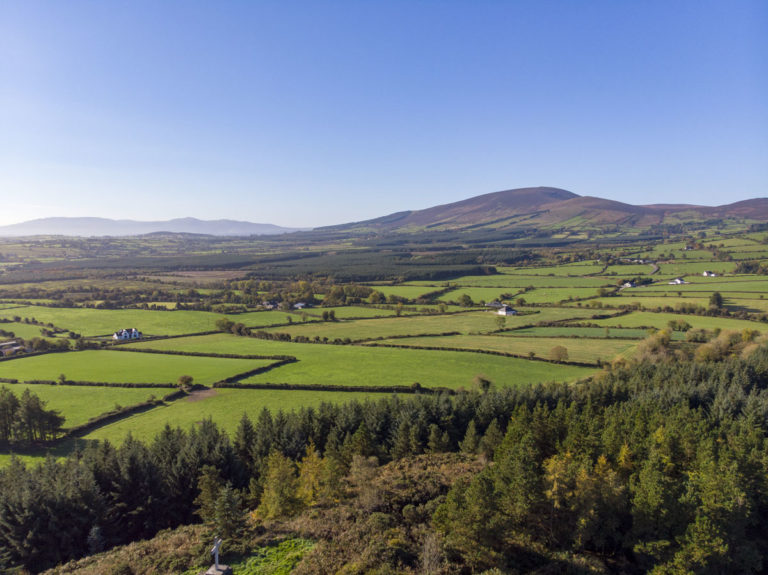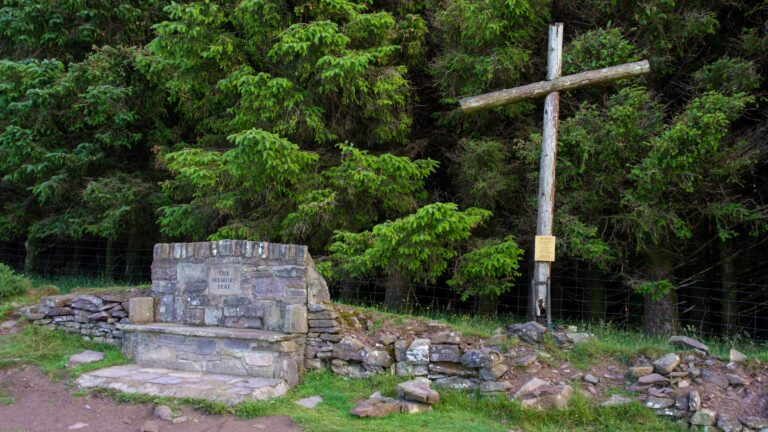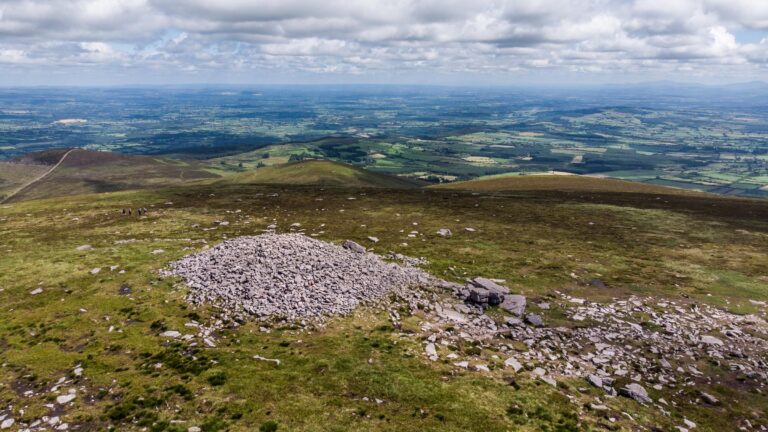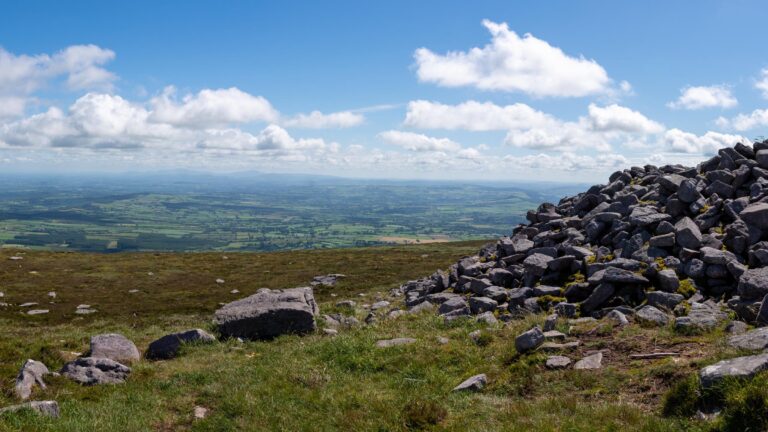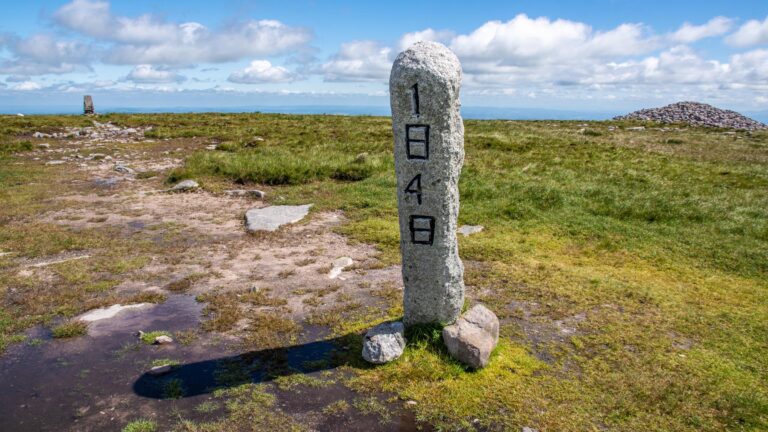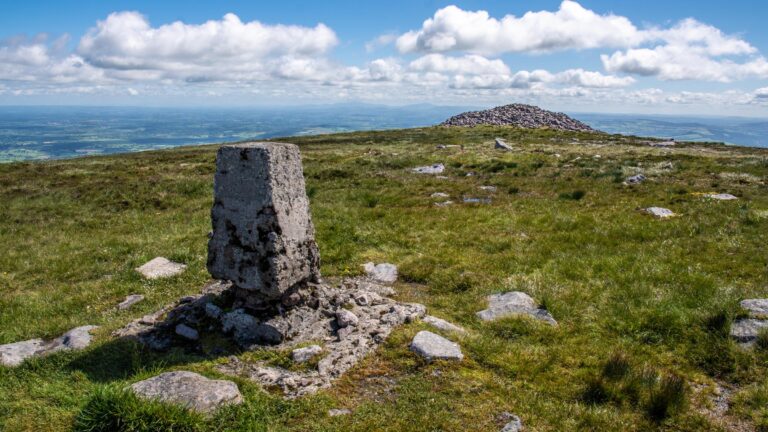721 m (2,365 ft) high, Slievenamon provides a dramatic view from the top over the counties of Tipperary, Kilkenny and Waterford and the Lingaun and the Suir Valley.
There are at least four pre-historic monuments on Slievenamon. On the summit is an ancient burial Cairn with a natural rocky outcrop on its East side forming the appearance of a doorway. The remains of a cursus or ceremonial avenue leads up to the Cairn from the East. On the mountain’s Northeastern shoulder, Sheeqouna, is another burial Cairn and a ruined Megalithic Tomb. They were seen as the abodes of Gods and entrance to the Otherworld.
When the first great monuments came to be built in the vicinity of Slievenamon just before 3,000 BC, a Cairn was located on the summit of Slievenamon so that it could be seen from the countryside to the East and specifically from Knockroe and Baunfree where megalithic Tombs were constructed.
Slievenamon can be reached from the N76 (the Kilkenny to Clonmel road) from which you can take the turn off for Kilcash. Continue on through the village following the signs for “Slievenamon Drive” until you come to a sign for ‘Slievenamon Summit’. Park up here and follow the track leading off from the left-hand side of the road.
A low hill attached to Slievenamon, known as Carrigmaclea (a.k.a. Carraigmoclear), was the site of a battle during the Irish Rebellion of 1798.
Legend has it that Fionn Mac Cumhaill was sought after by many woman but could only have one wife. So he called for a race to make his choice: his wife would be the first woman to race to the top of Sliabh na mBan. Fionn gave the start signal standing on the cairn at the top of the mountain and the winner was Grainne.
The song Slievenamon, written in the mid 19th century by revolutionary and poet Charles Kickham is a well-known patriotic and romantic song about exile, used always at Tipperary hurling matches.
